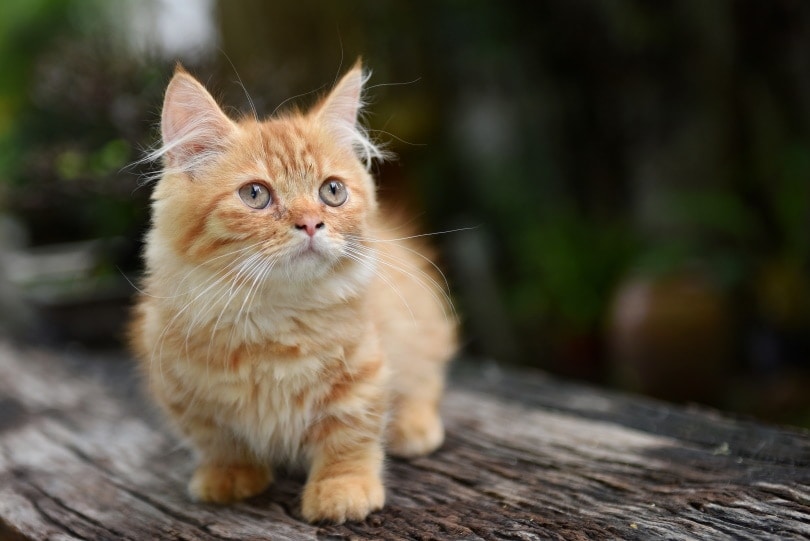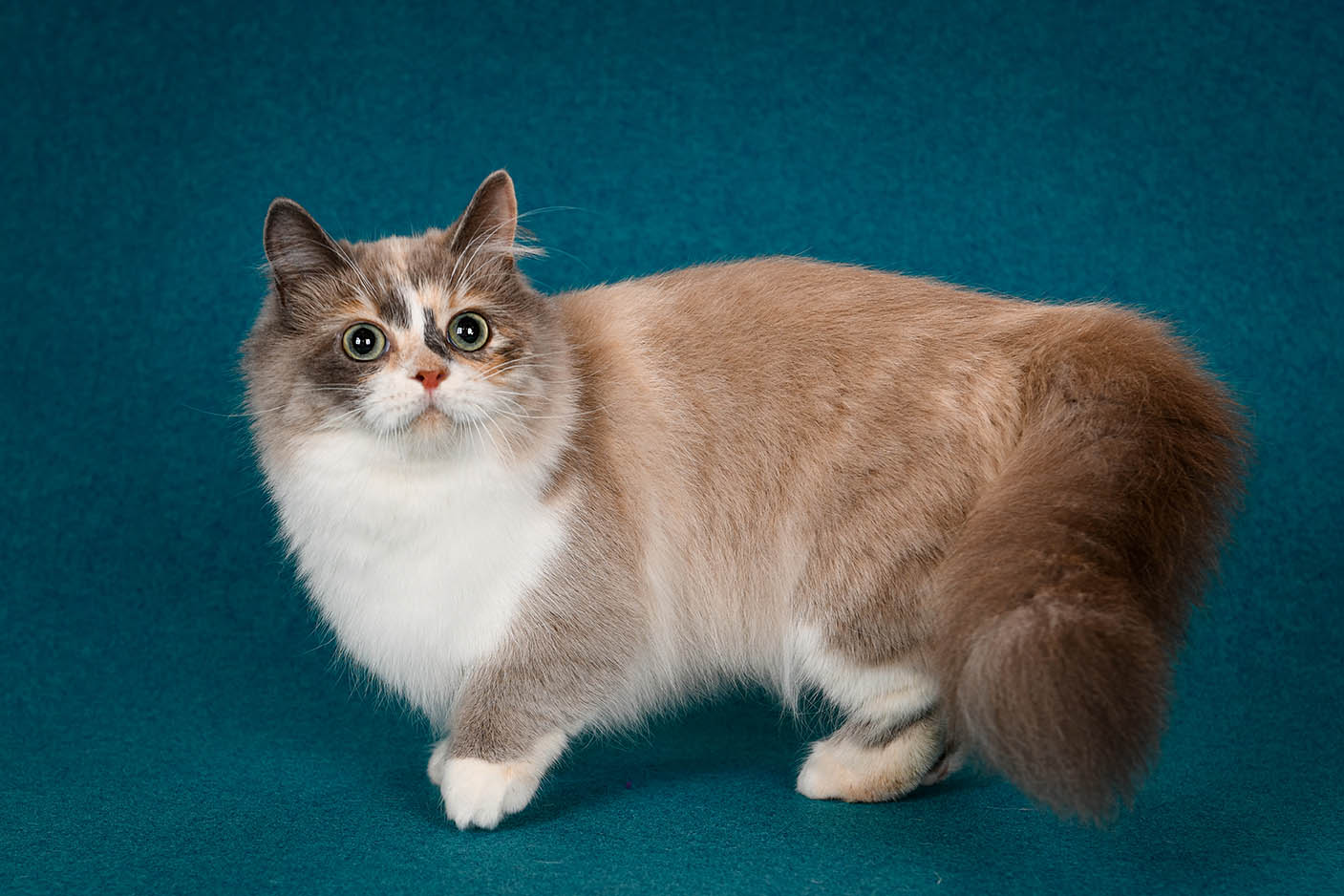How Much Does a Munchkin Cat Cost? 2024 Price Guide

Updated on

Click to Skip Ahead
The Munchin is a small to medium cat with short legs. Sometimes referred to as the sausage cat or the Wiener cat because of its similar build to the Dachshund, the Munchkin is a recognized purebred cat. As with any purebred, the price of a cat is dependent on many factors including the specific breed, age, health screening results, and pedigree.
A typical price ranges from $500 to $3,000 for the cat itself. Kittens typically cost more than older cats, and females cost more because they reproduce. Pure white and pure black cats, those with very short legs, and those with blue eyes will usually cost a premium. Adopting one will cost less, but it is rare to find such a rare and recognizable breed in the hands of an animal shelter.
You will also have the additional costs of housing, feeding, caring for, and protecting your cat. Below, we have included a guide to the typical costs associated with owning this breed of cat.
 Bringing Home a New Munchkin Cat: One-Time Costs
Bringing Home a New Munchkin Cat: One-Time Costs

The cost of the cat itself is only a portion of the upfront costs required. You will need items like bedding and toys. You will also need to pay for an initial supply of food. To buy or adopt a Munchkin, you will need to initially budget the following amounts.
Free
Free cats tend to come from friends or family that no longer want the cat. They may also be available online and in cat and even breed-specific groups. However, the value of the Munchkin breed means that you are unlikely to find any for free.
Adoption
$50–$300
Munchin cats can suffer some health complaints and illnesses, usually as a result of their short legs and long backs. Always take care to examine a cat before adopting it. Again, the rarity of the breed means that Munchkins are rarely found in shelters, but it is possible. Adoption fees vary by the shelter, but you should expect to pay between $50 and $300 in adoption costs.
Breeder
$500–$1500
Breeders are where costs can vary dramatically. The $500 to $1500 range is around average, but exhibition quality examples of the Munchkin breed can cost $2,000 or more. Conversely, you may be able to find one for $100 or less, although such a low price should raise flags and demand further investigation before buying.

Initial Setup and Supplies
$815–$1,575
There are certain supplies that you need to have at home when you bring your new feline friend back for the first time. The Munchkin breed does not have any breed-specific requirements, but you will need everything from food bowls to a cat carrier. The cost can vary, but expect to pay approximately $1,000, which includes the cost of spaying and the cost of health checks like X-rays and ultrasounds, which do inflate the price considerably.
List of Munchkin Care Supplies and Costs
| ID Tag and Collar | $15 |
| Spay/Neuter | $100-$300 |
| X-Ray Cost | $100–$250 |
| Ultrasound Cost | $250–$500 |
| Microchip | $45-$55 |
| Teeth Cleaning | $150-$300 |
| Bed/Tank/Cage | $20 |
| Nail Clipper (optional) | $10 |
| Brush (optional) | $10 |
| Litter Box | $25 |
| Litter Scoop | $10 |
| Toys | $20 |
| Carrier | $40 |
| Food and Water Bowls | $20 |
How Much Does a Munchkin Cat Cost Per Month?
$100–$150 per month

Over time, you may need to replace a carrier or a cat litter tray once in a while, but a lot of these items are considered to last a lifetime. However, ongoing costs include food as well as healthcare, and these costs will total upwards of $100 per month, as follows:
Health Care
$10–$20 per month
It is impossible to predict the healthcare requirements of a cat, and they will change over the cat’s lifetime. Typically, kittens and senior cats will attract higher monthly healthcare costs. You will have to pay for flea treatment and inoculations, as well as for any emergency or unexpected treatments.
Food
$40–$60 per month
This breed is prone to injuries and conditions caused by being overweight. Choose a premium food that is filling, offers a full and nutritional diet, and does not contain too many calories. Feed according to the age and exercise level of your cat, and remember that if you are trying to have them lose or gain weight, you should feed according to the target weight rather than the current weight.

Grooming
$25–$50 per month
The breed requires a little more help with grooming and daily care compared to other breeds. Its short legs prevent it from being able to properly groom itself. You can do some of this yourself, with regular brushing and helping to maintain proper claw length, but visiting a professional groomer every 2 or 3 months will prove beneficial. It will maintain coat length, prevent knotting and matting, and will leave your kitty feeling and looking better.
Pet Insurance
$10–$20 per month
The exact cost of pet insurance varies according to the breed, age, any existing health conditions, and the insurer and level of coverage you require. Cheap insurance policies cover the basics but have a lower monthly cost, while more expensive policies can even include some welfare coverage, such as flea treatments and spaying costs.

Environment Maintenance
$15–$30 per month
Whether your cat is indoor-only or you allow some time outdoors, you will want to provide a litter tray to prevent accidents and to keep the mess down. Prices are based on clumping clay litter and assuming one or two bags per month for a single cat.
| Bags of litter | $12-$25 |
| Litter box liners | $2/month |
| Deodorizing spray or granules | $5/month |
Entertainment
$10–$50 per month
A cat toy subscription box costs around $50 per month and includes one or more toys, as well as chews and other items. A subscription should include everything you need to keep your cat entertained. Cats do bore of toys quickly, but you can rotate different toys in and out as and when this occurs. If you regularly feed treats, remember to take this into account when determining how many calories to feed every day.

Additional Costs to Factor In
You should budget for unexpected costs. Some emergency treatments might not be covered by an insurance policy. An average vet visit can cost up to $400, and expect dental visits to cost the same. But emergency treatment following an accident or for a complex illness can cost thousands of dollars. This level of cost is rare but it can happen.
Some incidental costs may also occur, especially when going on holiday. Pet sitting costs between $200 and $400 per week for a single cat, for example.
Owning a Munchkin Cat On a Budget
Buying the Munchkin will cost you around $1000 for a pet-quality cat, while exhibition standard cats cost $2,,000 and up. If you do not intend to show your cat, consider buying one without the same pedigree breeding. This could potentially save you $1,000 at the purchase stage.
Avoid trying to save too much on your insurance policy because if something goes wrong, this will prove a false economy. Instead, make sure that the policy you choose is as exhaustive as possible so that it includes emergencies and covers as many illnesses and visits as possible.
Similarly, buying cheap cat food may save you a few dollars a month, but if it doesn’t provide everything your cat needs, you will pay the price through malnutrition and poor health.

Saving Money on Munchkin Care
If you take out a wellness policy, ensure that it saves you money in the long run. Such a policy may only work out marginally cheaper than paying for the individual treatments. If you don’t require particular treatment, it could cost more than paying as you go.
Cutting visits to the professional groomer can reduce the cost of ongoing care, too. Ensure that you brush your cat two or three times a week to help remove dead hair and to prevent its coat from getting in a mess. Start trimming nails and brushing teeth when the cat is a kitten, and you will be able to do these yourself, potentially saving hundreds of dollars a year.
 Conclusion
Conclusion
The Munchkin cat is a unique cat that looks similar to the Dachshund, hence its nickname of the Wiener cat. Buying one will cost around $1,000, and you should expect to pay approximately this same amount every year for the care of your cat. It is possible to cut these costs, but ensure that you don’t risk the health or welfare of your cat by ignoring essential insurance coverage or reducing the quality of their healthcare or food.
You might also be interested in: How Much Does a Lykoi Cat Cost?
Featured Image Credit: SV_zt, Shutterstock











